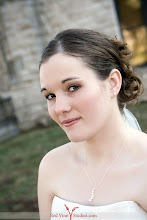When I hear the name Schönberg, I think of serialism, complicated rhythms, and atonality. Instead of memorable lyrical lines, I expect unpredictable melodies and Sprechstimme. My unfamiliarity with tone rows and the twelve-tone system has somehow translated to a disliking of his music over the years. However, amidst Schoenberg’s attempt to veer from the path of “normal” musical expression, he composed a piece that one cannot dismiss as being overly complicated. In A Survivor from Warsaw, Schönberg finds a way to use a serial system to communicate a very familiar and emotional story. While most are familiar with the events of the Holocaust, it is made real and current through Schönberg’s “Survivor,” no matter how far removed one may be. It is through this piece that I found a liking for Schönberg, or at least a sincere appreciation.
While there is quite a lot of controversy as to Schönberg’s motives for writing this piece, it is clear that his Jewish heritage and the experiences of his close friends and family during the Holocaust played a role in creating his libretto. Written in 1947, “Survivor” captures the raw emotions that many Jews experienced just a few years before it’s composition. Along with three languages (English, German, and Hebrew), Schönberg incorporates a twelve-tone system, Sprechstimme, hexachords and augmented triads. In many cases, the implementation of these techniques leads to a complex work that is often difficult to comprehend or lacking in expression. However, in A Survivor from Warsaw, the inclusion of the narrator and male chorus make it incredibly powerful.
While Schönberg’s methods are complex and seemingly “random,” it is obvious that he had decided some things prior to composing this work. For example, in the Hebrew text of the “Shema Yisroel,” ‘Elohenu Adonai’ is the Tetragrammaton, or a substitute for the most holy name of God. To pay tribute to this, Schönberg assigns the augmented triad E-C-A flat to that word so that every time it is sung, those pitches are heard. He carries this motif throughout the work at moments when either the faith or courage of the Jews was mentioned. He also used text painting in many cases. For example, on the word “reveille” a trumpet plays an ascending line, as would have been heard in the concentration camps every morning. These aspects of his music make it relatable and easier to comprehend.
It is interesting that A Survivor from Warsaw is not considered a part of the canon as it is recognized as “undoubtedly one of his most immediately powerful expressions and, in terms of public acceptance, one of the more successful of his later works.” When I glanced at the list of repertoire for this journal, I was immediately drawn to Schönberg’s piece because I was somewhat familiar with it and wished to explore it further. What I realized is that while this seven-minute piece was not typical of Schönberg, it was a testament to his faith and family and to the thousands of people who lost their lives to genocide. Further, while serialism is not a technique I am comfortable with, I realize that it is a key in creating the “powerful expression” in “Survivor” and is not meant to make the listener comfortable but to truly recreate the tragic and memorable moment in history.
Subscribe to:
Post Comments (Atom)

No comments:
Post a Comment